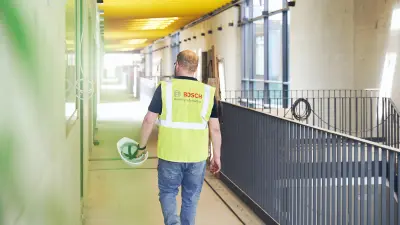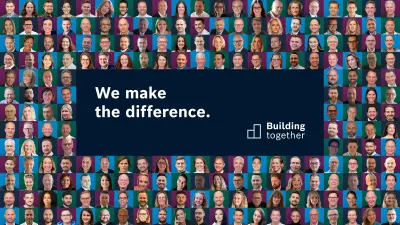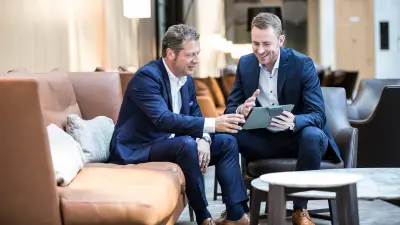“I’m inspired by helping to reduce costs and protect the environment”
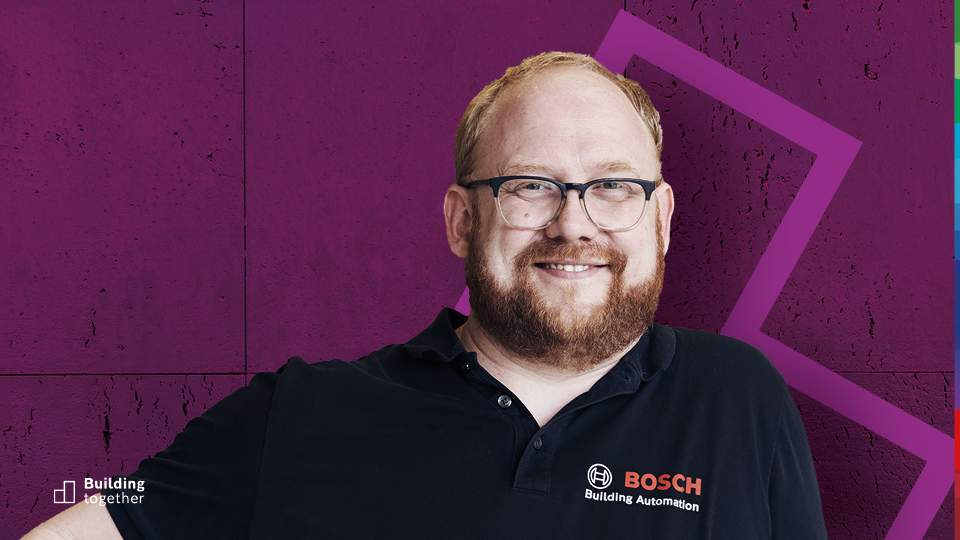
Building automation is the future. Also, and especially, for making buildings more energy-efficient. Marco Krause is a project manager at Bosch, keeping the big picture in view.
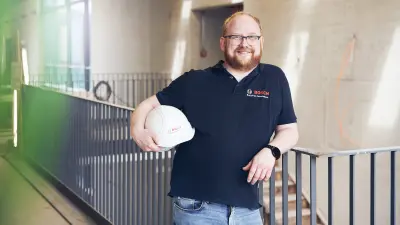
Efficiency classes are poised to play an even more important role in buildings going forward. More than anything else, they define how buildings impact the environment and the earth’s climate. Marco Krause is inspired by this challenge. He heads projects in Bosch’s building automation division in Weilimdorf, a borough of the southern German city of Stuttgart. “The customer gets a system that slashes costs while benefiting the environment at the same time. If I can help keep the Earth’s environment intact for future generations, that’s something worth working for,” he says – and he should know, being a father himself.
It's about optimizing consumption and extensively automating systems to avoid wasting energy and ensure a pleasant indoor climate at the same time. To achieve this, heating, air conditioning, ventilation or plumbing are closely coordinated. And the common denominator is building automation. “For many people, building automation is like a black box. Even many planners only have a vague idea of what it involves. They say, just press the button and presto! But at the end of the day, there’s more to it than that,” grins Marco.

Building automation lets individual systems unfold their strengths
After training as an electrician, 12 years ago Marco joined GFR - Gesellschaft für Regelungstechnik und Energieeinsparung mbH (now Bosch Building Automation GmbH) as a building automation technician. It has been integrated in Bosch Energy and Building Solutions since 2019. “My mentor taught me that we’re the key profession in construction projects. We design and program the switch cabinet so that all of the systems run exactly like the planner has promised the customer.” Information from other systems converges in Bosch’s switch cabinets, revealing whether a ventilation system is properly adjusted and the heat generation and supply temperatures are just right. The customer can also see and evaluate any important fault alerts on the master control level or the switch cabinet’s display.
In order to harmonize all of these highly complex individual components, the first step is to request all of the documents relevant to the various involved trades, like lists of required parameters, control schemes, and assembly diagrams. Marco and his team then use this information to plan the installation work. “We collect detailed information on everything from cables to field devices and then coordinate everything with the planner and customer.” Especially when doing jobs in existing buildings, it’s important to investigate the established routines and schedules. When is work done there? During which parts of the day or night is ventilation needed? What indoor temperature is wished? Can the energy consumption of systems (particularly preexisting ones) be optimized with intelligent regulation and control? “There are different ways to tweak and adjust things – but at the end of the day, success depends on close cooperation with planners and customers.” And building automation plays an important role across both existing and new buildings.
-

In the new construction of the laboratory and workshop building H on the Kammgarn campus of the Kaiserslautern University of Applied Sciences, a project that Marco is currently supervising as site manager in the area of building automation, Bosch is implementing the complete automation system -

The regulation and control is carried out for systems such as chillers, heat pumps and ventilation systems and rooms such as workshops, laboratories, classrooms and meeting rooms. With a usable floor space of around 9,600 square meters, the laboratory and workshop building H will be used in the future by the School of Applied Engineering Sciences
Career switchers enrich the team
In the field of building automation, success depends on various factors. Specialist knowledge is important, and so are curiosity and the desire to understand how the various involved disciplines interact and mesh. Marco is convinced that career switchers enrich the team. “Someone who installs heating systems doesn’t usually deal directly with ventilation that much, but can be brought up to speed in that area with some intensive extra training. Provided, of course, that they are motivated to acquire new skills.” Marco himself is a good example; he originally trained as an electrician. During his first years on the job he benefited from having a mentor who helped him avoid being overwhelmed by the many demands placed on him. And today Marco is a mentor himself, sharing his knowledge and experience with others. “These days it’s no longer enough to tell new employees to just jump into the water and swim, somehow. Fields like hydraulics and ventilation, for example, call for broad expertise. Our mentoring program directly promotes and advances individual employees.”
For new employees, Marco is the go-to person for learning about internal structures and processes. Also when tools are missing, and especially in connection with on-site jobs. He assesses their current knowledge and skill level, identifies areas in which they need more intensive training, and works with the training department to appropriately adjust the onboarding plan. One of the technicians he mentored learned how to program and now, a year later, is already installing systems on his own. “This kind of self-reliance is what we want.” Marco’s knack for assessing coworkers’ talents has to do with the fact that he himself – despite not actually being a programmer – subsequently received training in it. “I need to be able to assess what a job requires, how long it will take to complete, and how our tool works. If a planer wants to discuss details and no programming technician is available, I’m able to quickly figure out the issues involved.”
Marco can be regularly encountered at construction sites where the seven technicians of his team are working. “I lead the project and have to keep track of everything. From time to time I also pick up a screwdriver if my colleagues on site run into problems. This hands-on involvement keeps me up to speed on how the construction project is going, how happy the client is with the progress being made, and what’s going on with our employees and outside contractors.” If a team falls behind schedule, this also affects Marco’s planning. When a system can’t go live it holds up the entire project, leaving a smaller time window than originally planned for the building automation work.
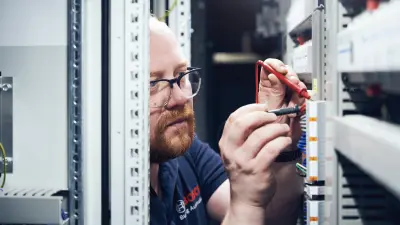
Energy efficiency and building automation as innovation drivers
What fascinates Marco about building automation is that it’s a blend of organization, technology, and innovation. “Those who deal with building automation work in a constantly evolving environment.” Inspiration, ideas, and progress happen on both the outside and the inside. Externally in the form of new technologies and trends, and internally driven by the company’s own in-house development departments. “We also benefit from the fact that Bosch has its own experts for all building systems and is an innovation driver with immense expertise and experience across all areas. We have a great team and great possibilities for upgrading and extending our skills and knowledge, and can learn something new every day if we want. And I do!”
The projects Marco works on also reinforce his feeling of having chosen the right profession. His work also takes him past doors that are closed to most people. In the legendary Olympic Hall in Munich, for example, he was treated to a unique glimpse behind the scenes. “We found a chiller that had been there since 1974, back when the Olympic Hall still hosted ice skating events. We talked to the technician who serviced it. The core unit was still intact, and we connected state-of-the-art valves, sensors and actuators around it.” On concert days, Marco – who is a passionate hobby electric guitarist – personally witnessed what goes on behind the scenes and how the stars get ready to perform. A special kind of backstage experience!
Although building automation still isn’t that common in private homes, there too the trend is toward optimizing settings to avoid wasting resources. “Building automation and energy optimization also go hand in hand. At home you can set the times for the heating to turn on or the sunscreens to come down. Installing a heat pump in your house also helps reduce energy use.”
